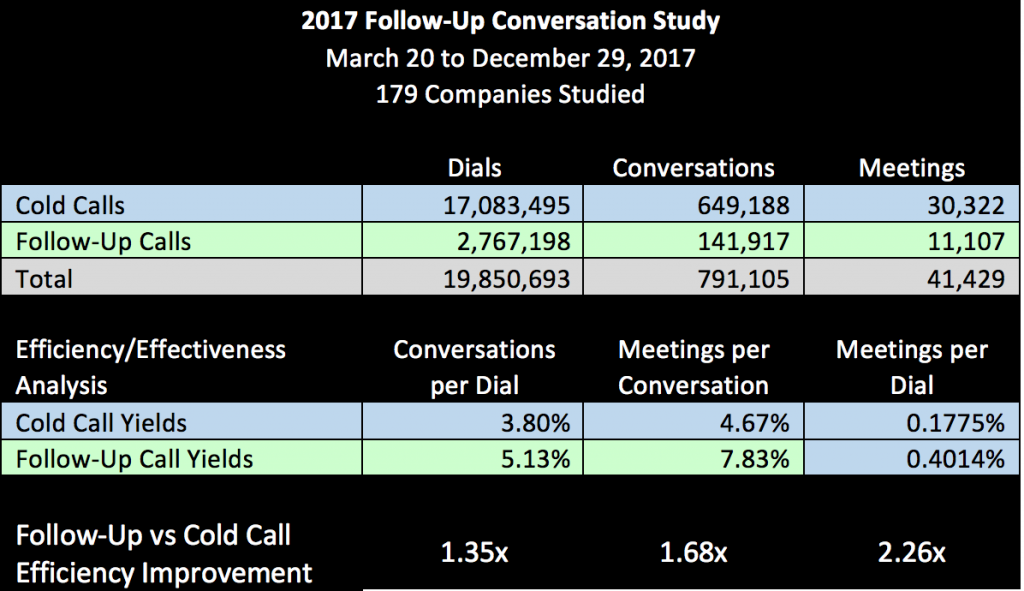By Sharon Gillenwater
From the time we’re quite young, we’re assured by the adults in our lives that there are no stupid questions.
That may be true when we’re kids – when we need to develop the confidence to ask about what we don’t know; however, the same does not apply to adults working in enterprise sales. Live by that philosophy and you are going to be like the old Maytag repairman – very lonely.
We’re not saying you shouldn’t ask ANY questions. We’re saying you should be aware of the ones that will reveal a lack of preparation. Ask “stupid” questions and you could lose credibility, trust, and, as a result, opportunities.
According to Tom Searcy’s book, How to Close a Deal Like Warren Buffett, America’s greatest dealmaker goes into meetings with “an encyclopedic” level of knowledge about the other party. He doesn’t ask about industry, market, competitors, or advantages because he already knows all about them. He does his pre-meeting homework religiously so he can cut right to a meaty business discussion.
Now consider how you and your team approach a meeting with a new prospect. There are just some questions that shouldn’t be asked – because they show you haven’t done the most basic legwork.
Forbidden questions include:
- “What does your company do?”
- “Who are your customers?“
- “Who is your competition?”
- “What is your company’s business strategy?”
All of these will be cringe-worthy to a C-Level executive. Why? Because their time is their most precious asset – and they don’t want to waste it talking about things you could have learned from reading a few articles and earnings call transcripts. You should already know all these things before you walk in the door.
Sales-i has designated, “What does your company do?” as among the laziest of questions. As they write, “Anyone can Google a company, look up a contact on LinkedIn and get a general gist of what a company does. It takes 5 minutes, if that. Not only does it allow you to qualify out some companies without even having to lift the receiver, but understanding a little bit about the company you’re about to call will only put you in good stead to divulge exactly where your offering can help.”
But that’s just baseline. Sales pros at the top of their game are not content with doing the bare minimum. Their goal is to demonstrate some knowledge about the company, its competition, its strategic focus and challenges, its current market environment, and how it plans to grow.
Another cringe-worthy question to ask executives is whether they are the decision maker. You should know that already, too. What you should ask instead is, “Who else is involved in the decision making process?” since C-level leaders typically ask for input from subject matter experts and other stakeholders.
Also verboten: Don’t ask if they are in the market for your product or service. What if they have a need they don’t even recognize yet? Your goal is to have a business discussion that helps them understand what’s possible and position yourself to be an expert partner, advisor, and – if all goes well – vendor.
Be careful of mixing budget talk with business talk. While this conversation has to happen eventually, pushing too hard to deliver a proposal could be a turnoff. You want an executive to see you as being a helpful problem solver; let them take the lead on driving toward proposal stage. By the time you reach that point, it should be clear to your customer that what you’re proposing is worth the cost. This approach also keeps your offer from being commoditized in the eyes of the customer – because you have already delivered so much value in the pre-sale phase.
Jeremy King of Element Three has a list of 15 dumb sales questions to avoid that include some of the ones above and some others you should consider:
- “Is this a good time to chat?”
- “What level of service are you willing to pay for?”
- “What will it take to earn your business?”
- “Who was the best salesperson who ever called on you?”
- “What do you dislike about your current vendor?”
These questions, he says, invite dismissal. No one wants to talk to a salesperson who is so blatantly self-serving. Buh-bye.
Now let’s talk about smart questions – the ones that show a genuine interest in your customers and a desire to help them achieve their goals. Look back at that paragraph about Warren Buffett and strive to know everything he would insist on knowing. Search for articles about the company and its executives and read the most recent earnings call transcripts. Make a cheat sheet by jotting down the highlights and share it with anyone else from your company who will be in the meeting.
It can make for a deep dive, but the information you collect will help you connect the dots between your customer and how you might be able to help them. You can then use your meeting to explore your hypothesis by asking smart questions.
So, instead of asking who the competition is, you can instead ask about how a recent acquisition announcement by competitor A is impacting their priorities and strategy.
And, instead of asking what their technology investment priorities are, ask if they are concerned that their back office or supply chain technology may be inhibiting growth in specific areas that you know they’re focused on.
The more you know about a potential customer the better you can demonstrate how you can serve those needs. If you have “stupid” questions, get them out of your system by answering them through research before you go anywhere near the customer. Then you can refine your questions and turn them into jumping-off points to more meaningful conversations that lead to strong, long-term relationships and bigger deals.
 Sharon Gillenwater is the founder and editor-in-chief of Boardroom Insiders, which maintains an extensive database of the most in-depth executive profiles on the market – from Fortune 500 companies to independent non-profits – to help sales and marketing professionals build deeper relationships and close more deals with clients. Gillenwater is a long-time marketing consultant with expertise in marketing strategy, account-based marketing, and CXO engagement programs.
Sharon Gillenwater is the founder and editor-in-chief of Boardroom Insiders, which maintains an extensive database of the most in-depth executive profiles on the market – from Fortune 500 companies to independent non-profits – to help sales and marketing professionals build deeper relationships and close more deals with clients. Gillenwater is a long-time marketing consultant with expertise in marketing strategy, account-based marketing, and CXO engagement programs.



















